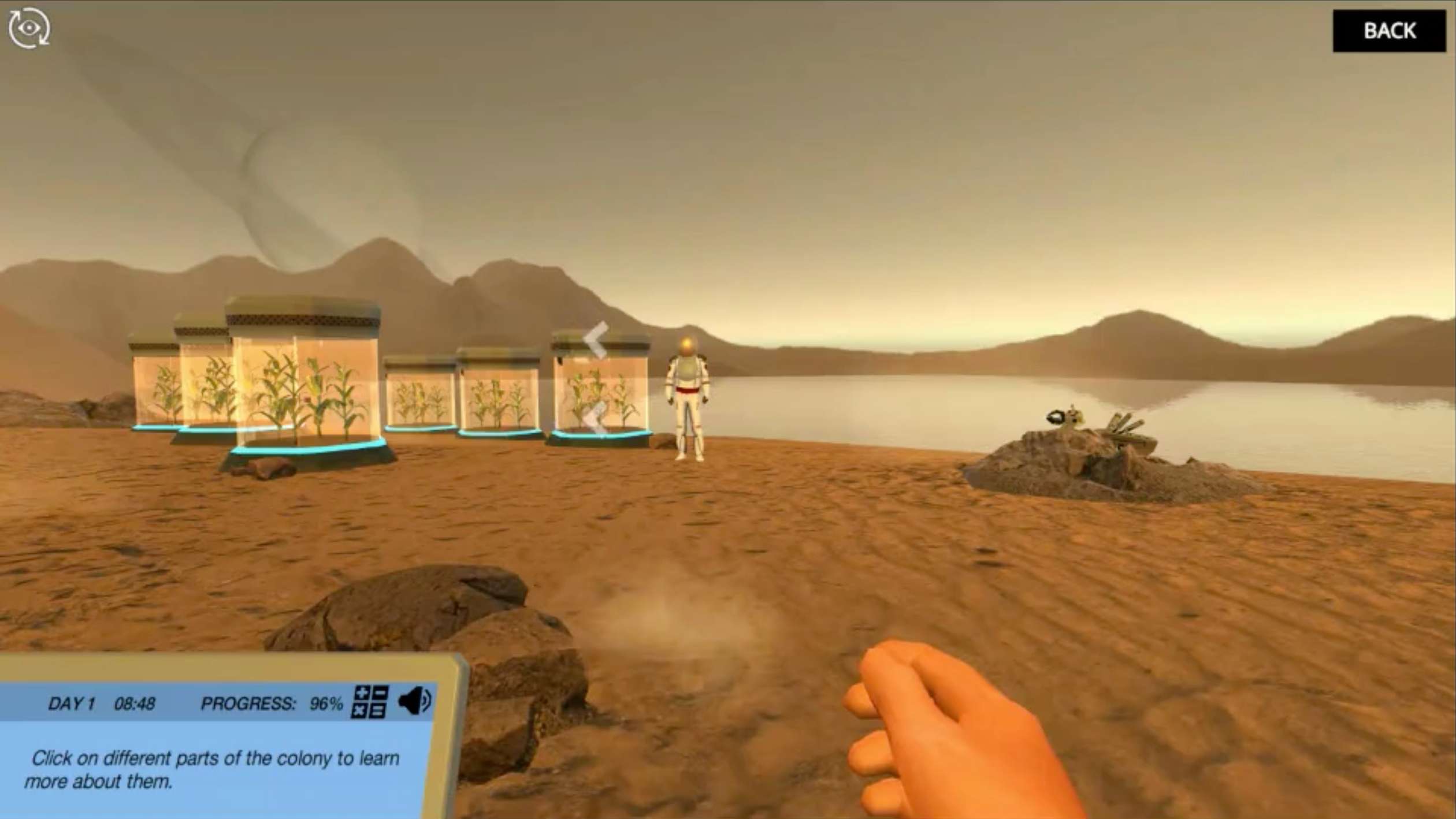Heading 1
Heading 2
Heading 3
Heading 4
Heading 5
Heading 6
Lorem ipsum dolor sit amet, consectetur adipiscing elit, sed do eiusmod tempor incididunt ut labore et dolore magna aliqua. Ut enim ad minim veniam, quis nostrud exercitation ullamco laboris nisi ut aliquip ex ea commodo consequat. Duis aute irure dolor in reprehenderit in voluptate velit esse cillum dolore eu fugiat nulla pariatur.
Block quote
Ordered list
- Item 1
- Item 2
- Item 3
Unordered list
- Item A
- Item B
- Item C
Bold text
Emphasis
Superscript
Subscript
About This Simulation
Travel to Titan on a reactivity reconnaissance mission and explore this hydrocarbon world. Can you use your knowledge of the electrophilic addition reaction to identify hydrocarbons that you could use to build an extra-terrestrial colony on Titan?
Learning Objectives
- Describe the reactions of simple alkanes, alkenes, and alkynes
- Describe the reaction of simple alkenes with electrophiles
- Demonstrate a detailed mechanistic understanding of addition reactions
- Predict which way an electrophile will add to an alkene using Markovnikov’s Rule and an understanding of carbocation stability
- Predict the major product of the main different types of addition reactions
About This Simulation
Lab Techniques
- Bromine Test for hydrocarbon unsaturation
- GC data analysis
- Gas-liquid reaction
Related Standards
- No direct alignment
- No direct alignment
- No direct alignment
Learn More About This Simulation
Buckle up for a chemistry journey a billion kilometers away! In the Electrophilic Addition: Explore Reactions of Hydrocarbons simulation you will identify some natural hydrocarbon resources on Saturn’s moon, Titan, and explore their most significant reactions. Hydrocarbons may be the simplest organic molecules - but they provide great building blocks for chemical synthesis!
Investigate hydrocarbons on Titan
Join Dr. Smith in the Titan lab to begin identifying hydrocarbons that could be used to synthesize more complex substances and materials. Discover which hydrocarbons and reactions are the most synthetically useful for our colonization mission. We’ll delve deeper into understanding the electrophilic addition reaction and its wide-ranging applications.
Perform and visualize addition reactions
Be immersed at a molecular level in our 3D reaction visualizer. There you’ll engage interactively with the reaction components and carry out the electrophilic addition reaction mechanism in 3D. Get better acquainted with reaction principles and selectivity and see the reaction happen before your very eyes!
In our lab, you’ll perform the bromine test for hydrocarbon unsaturation on Titan samples before carrying out investigative electrophilic addition reactions in the fume hood. Find the equipment you need to perform electrophilic addition reactions on two alkene isomers simultaneously and use your knowledge to predict the products. With replenishing pipettes and the option to reset - there are opportunities to repeat experimental steps quickly in our virtual lab!
Explore selectivity - and the colony
Lastly, you will analyze the results of your electrophilic addition experiments and investigate possible products in our 3D molecular visualizer. Will you be able to identify and synthesize hydrocarbon materials that we can use to build a colony?
For Science Programs Providing a Learning Advantage
Boost STEM Pass Rates
Boost Learning with Fun
75% of students show high engagement and improved grades with Labster
Discover Simulations That Match Your Syllabus
Easily bolster your learning objectives with relevant, interactive content
Place Students in the Shoes of Real Scientists
Practice a lab procedure or visualize theory through narrative-driven scenarios


FAQs
Find answers to frequently asked questions.
Heading 1
Heading 2
Heading 3
Heading 4
Heading 5
Heading 6
Lorem ipsum dolor sit amet, consectetur adipiscing elit, sed do eiusmod tempor incididunt ut labore et dolore magna aliqua. Ut enim ad minim veniam, quis nostrud exercitation ullamco laboris nisi ut aliquip ex ea commodo consequat. Duis aute irure dolor in reprehenderit in voluptate velit esse cillum dolore eu fugiat nulla pariatur.
Block quote
Ordered list
- Item 1
- Item 2
- Item 3
Unordered list
- Item A
- Item B
- Item C
Bold text
Emphasis
Superscript
Subscript
A Labster virtual lab is an interactive, multimedia assignment that students access right from their computers. Many Labster virtual labs prepare students for success in college by introducing foundational knowledge using multimedia visualizations that make it easier to understand complex concepts. Other Labster virtual labs prepare learners for careers in STEM labs by giving them realistic practice on lab techniques and procedures.
Labster’s virtual lab simulations are created by scientists and designed to maximize engagement and interactivity. Unlike watching a video or reading a textbook, Labster virtual labs are interactive. To make progress, students must think critically and solve a real-world problem. We believe that learning by doing makes STEM stick.
Yes, Labster is compatible with all major LMS (Learning Management Systems) including Blackboard, Canvas, D2L, Moodle, and many others. Students can access Labster like any other assignment. If your institution does not choose an LMS integration, students will log into Labster’s Course Manager once they have an account created. Your institution will decide which is the best access method.
Labster is available for purchase by instructors, faculty, and administrators at education institutions. Purchasing our starter package, Labster Explorer, can be done using a credit card if you are located in the USA, Canada, or Mexico. If you are outside of North America or are choosing a higher plan, please speak with a Labster sales representative. Compare plans.
Labster supports a wide range of STEM courses at the high school, college, and university level across fields in biology, chemistry, physics, and health sciences. You can identify topics for your courses by searching our Content Catalog.















